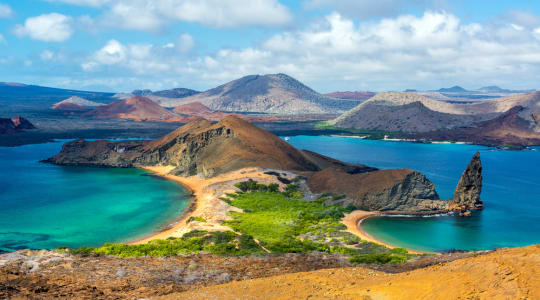The Galapagos Islands are a group of volcanic islands located about 600 miles (966 km) off the coast of Ecuador, South America. The archipelago is known for its unique and diverse wildlife, which inspired Charles Darwin's theory of evolution by natural selection. The Galapagos Islands are a UNESCO World Heritage Site and a national park of Ecuador, attracting millions of tourists and scientists each year.
The Galapagos Islands are home to a variety of wildlife, including giant tortoises, marine iguanas, and many species of birds, such as Darwin's finches. The islands also have a rich marine ecosystem, with a variety of dolphins, whales, and sea lions, as well as a diverse range of fish, reef, and coral species.
Visitors to the Galapagos Islands can participate in a variety of activities, such as hiking, snorkeling, and wildlife viewing. There are several guided tours available, allowing visitors to explore the different islands and observe the wildlife in their natural habitats.
The Galapagos Islands are also a popular destination for scientific research and environmental conservation efforts. There are several research stations and conservation organizations operating on the islands, working to study and protect the unique and fragile ecosystems.
Cross-Border Adventures Near Galapagos islands
Discover cross-border adventures near Galapagos islands. Explore neighboring countries with similar attractions and extend your travel experience across borders.







